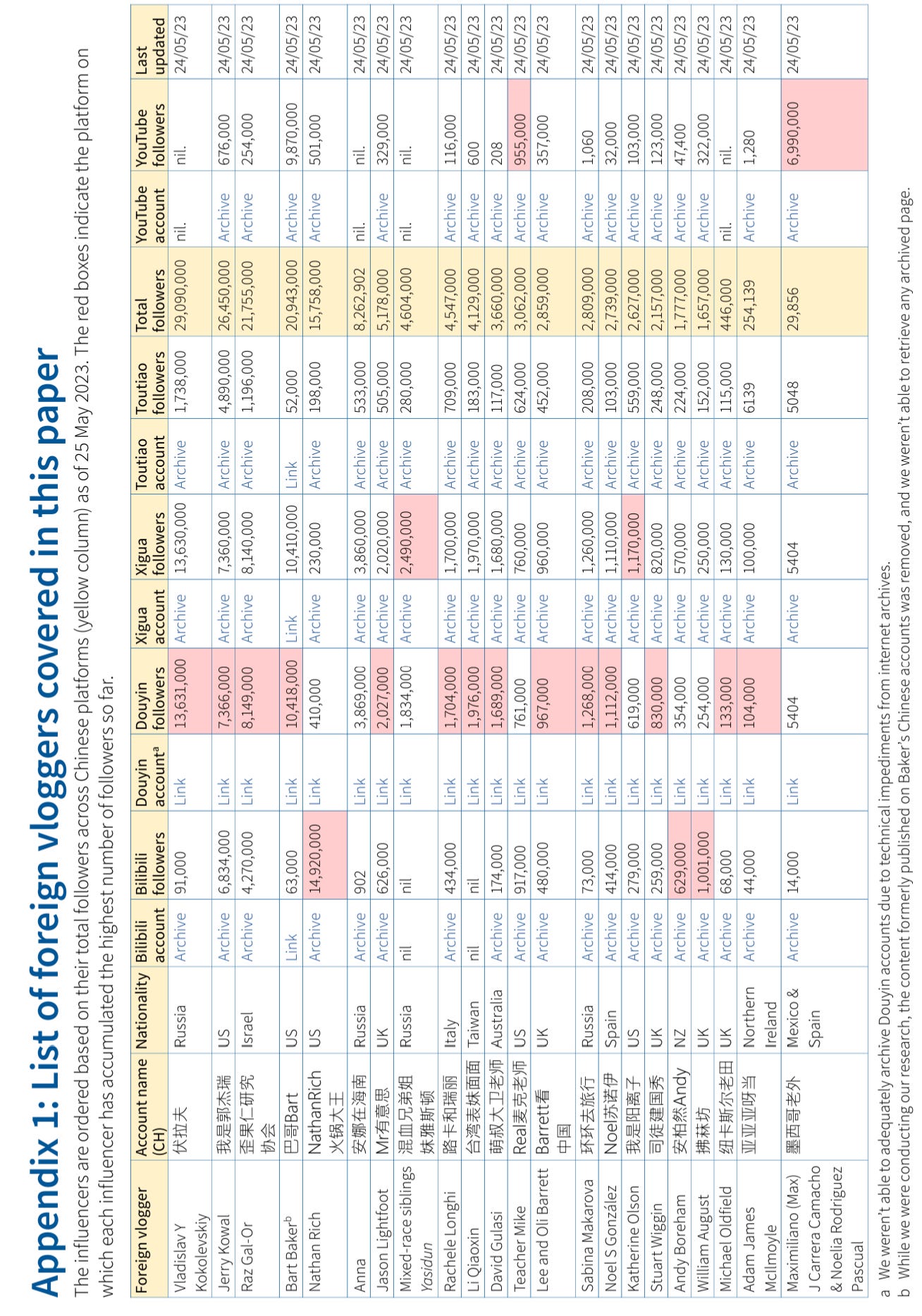This Time, With Xi-ing
A C(CP)horus Line
Welcome to Memetic Warfare Weekly.
My name is Ari Ben Am, and I’m the founder of Telemetry Data Labs - a Telegram search engine and analytics platform available at Telemetryapp.io - and Glowstick Intelligence Enablement.
Memetic Warfare Weekly is where I share my opinions on the influence/CTI industry, as well as share the occasional contrarian opinion or practical investigation tip.
This week will also be a little short as I need some time still to gather my thoughts and thoroughly review the Meta Adversarial Threat Report, so catch that next week.
This Time, With Xi-ing
This ASPI report is a bit different than its past ones, as it focuses on high-level discussion of strategic influence and propaganda goals, as well as covering individual cases of influencers comprehensively.
For that reason, I’d recommend reading it thoroughly, as even for the initiated (let alone the uninitiated), there’s a lot of historical deep-dive style content that one otherwise wouldn’t’ come across.
The thrust of the report is that the Chinese external propaganda and influence apparatus utilizes a bevy of influencers - domestic, masked state media presenters, foreign influencers and ethnic minorities to create ‘polyphonous communication’ (复调传播).
Leaving aside the Chinese proclivity to provide catchy policy chengyu style names for its ideas, there is an underlying logic to this.
The “polyphonous communication” approach utilizes a few important cognitive biases and also, perhaps most importantly, is holistic and hard to police.
Why does this make sense?
Influencers are hard to police, even if labelled by platforms. People don’t like the idea of shutting down “authentic” individuals or speech, despite being
Free speech implications
Cheap/Easy/High Quality (ish) content that utilizes cognitive bias of “similarity”.
Image source: https://thedecisionlab.com/reference-guide/psychology/the-similar-to-me-effect
For those interested in learning more about cognitive biases in IO, check out Rand Waltzman.
Role of foreign influencers on domestic audiences - important as per Xi thought:
Foreign influencers boost this in the eyes of Xi thought - perhaps explains the prominence of use of Chinese platfomrs among foreign influencers
Only then does their role in impacting foreigners come into play:
I’ll just throw in a good word here for correct usage of location-spoofing to receive specific results, and the power of exploiting platform algorithms and marketing campaigns to organically find content, as shown below.
From there, it goes into a VERY deep dive into the history of the use of foreign influencers in China, and I recommend you read it, but it’s too long to cover here.
Kudos to ASPI for publishing a list of some of the influencers, and search term results:
Indonesia
Channel News Asia, a great source in general, surprised me with the insight they got into a recent, civilian-led psyops/IO initiative targeting Israelis, although it did arguably downplay the moral elements of the ongoing campaign.
The article itself discusses an ongoing, Indonesian hacktivist-led campaign to target Israelis (rather brutally, I might add).
The campaign, organized by Indonesian hacktivist Telegram channels, targets Israelis by doxxing Israelis (whom the Indonesians believe to be soldiers) by publishing their phone number, email address, social media accounts and so on, and calling on Indonesians to then contact them, sending them gore and snuff content from the ongoing war as well as writing, in Hebrew, “we will kill you and your family”.
Overall, pretty gruesome stuff from civilians, although many of these are in fact shared by hacktivist groups and others who have very few to no qualms engaging in this sort of questionable (to say the least) activity.
What can we learn from this? There are two key points.
Social media monitoring is insufficient. Being able to search Telegram and other deep web sources is needed (shameless plug for Telemetry.io).
IO and malign activity isn’t just for states anymore! Regular people can and will get involved, especially hacktivist groups.
That’s it for this week. Next week or the week after we’ll (finally) discuss Meta’s new adversarial threat report and hopefully Recorded Future’s new report.










